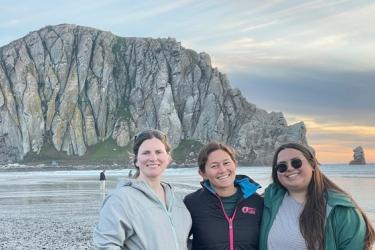Water temperature in winter was slightly colder than average and the water column was well mixed. During winter, the plankton were characterized by familiar winter (southern) species, but species indicative of summertime cool ocean conditions made an early appearance at our mid-shelf station. These are copepod species such as Calanus marshallae, a lipid-rich northern species, and Neocalanus. Pyrosomes were spotted up and down the Oregon coast in winter, likely transported from southern waters where they have remained more prevalent in recent years.
In early April we felt the strong, persistent North winds which usually herald the start of the spring transition. An upwelling data product compiled by Pierce and Barth, OSU physical oceanographers, calculate 2021 as the year of earliest spring transition in their 36-year dataset. We sampled during a period of wind relaxation in late April and encountered our first batch of ‘gunky’ samples. From nearshore to mid-shelf, the water was full of phytoplankton, making our nets and samples a deep, dark green. We also captured a strong pulse of meroplankton including barnacle nauplii and polychaete larvae. This is in stark contrast to our offshore stations which were full of krill, Pseudocalanus (cold water copepod), and Neocalanus (cold water copepod); creating a beautiful pink color in the samples.
Water temperatures were cold and CTD casts along the NHL showed characteristic upwelling dynamics. Check out contour plots and oceanographic data graphs that are updated after each cruise.
We could be looking at another early biological transition and a productive upwelling season.




